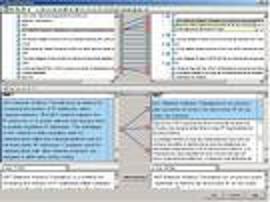
In addition, these texts are aligned in translation units or “segments”, which may be words, sentences, or whole paragraphs.
The main function of translation memories is to extract complete or partial suggestions for a segment and concordances for a term.
Main benefits
Translation memories are most useful when working with documents with technical terms or otherwise specialized vocabulary. They can be, and are, used for any translation job and for any topic, since they offer several advantages, including:
• They ensure that every part of the document is translated: empty segments, meaning those for which no translation has been provided, are not accepted.
• They ensure that the translated documents are consistent, including common definitions and terminology. This is highly important, above all when different translators work on one document that has been divided into several parts.
• They allow translators to work with a wide variety of formats without the need for any special software.
• They accelerate the global translation process by “remembering” the material that has already been translated: translators need to translate it only one time, since the translation is then indicated every time it occurs in the text.
• They guarantee consistency and uniformity in the translation and the style, since one term can have several possible definitions or translations.
• Costs are considerably lower: the texts that are to be translated can be analyzed with a translation memory to indicate the number of new or repeated (those already existing in the memory) words, sentences or segments that are identical in the documents or those that have only a couple of changes. Costs and the budget are created based on this, which is why the price lowers in comparison to a text in which all of the words are analyzed equally to generate the budget.





